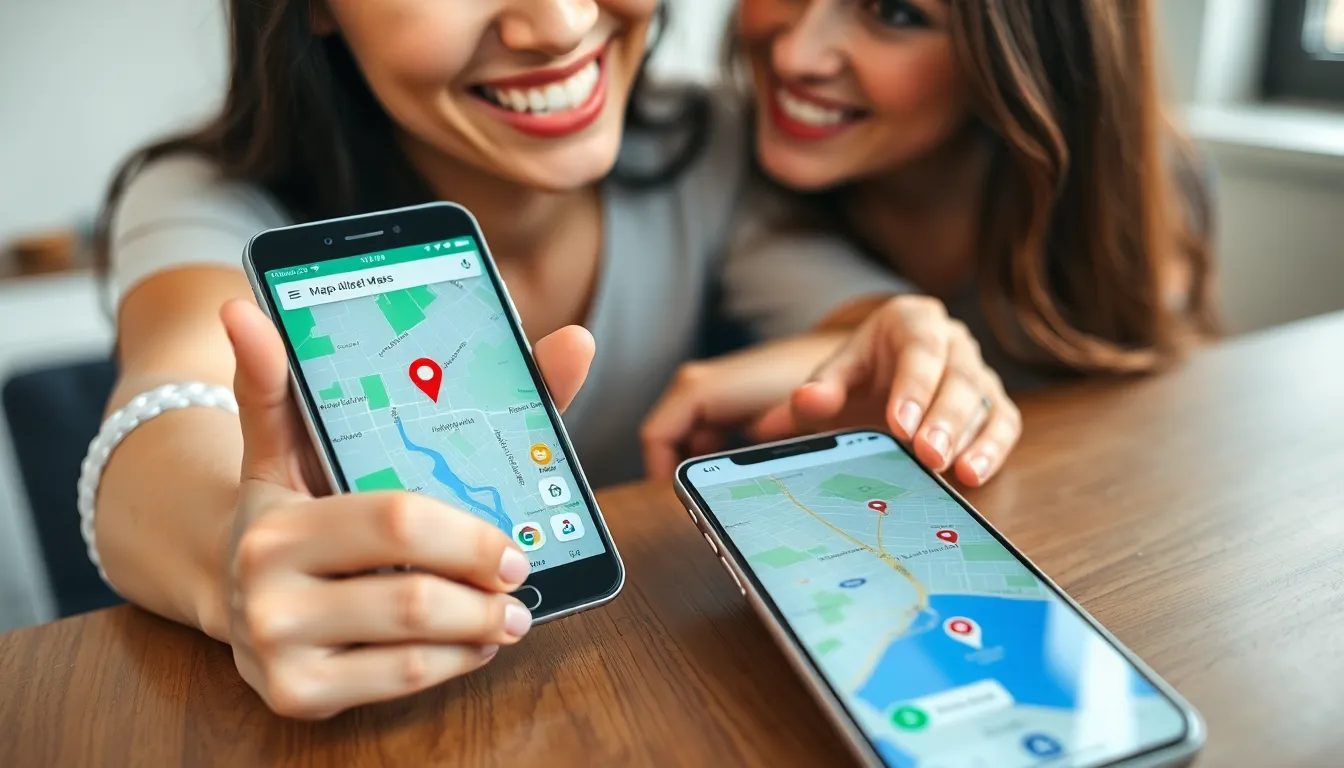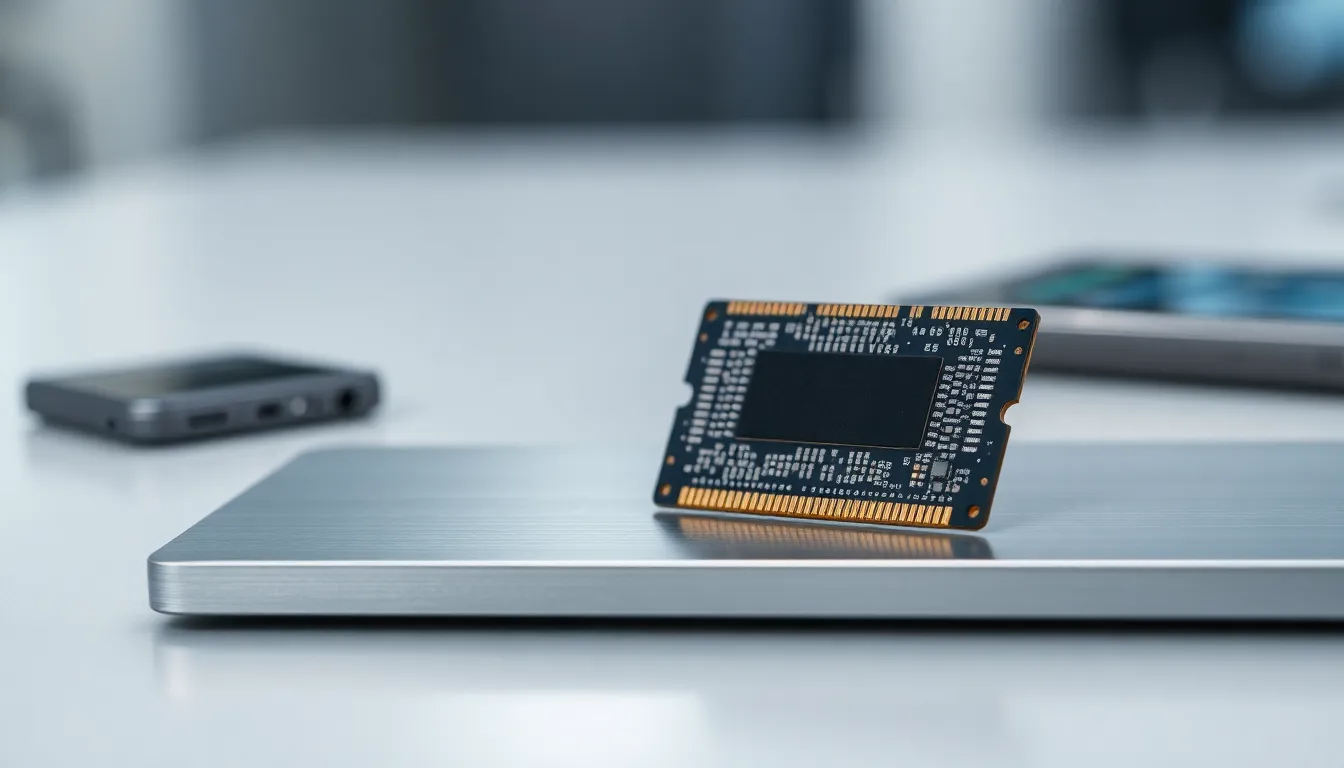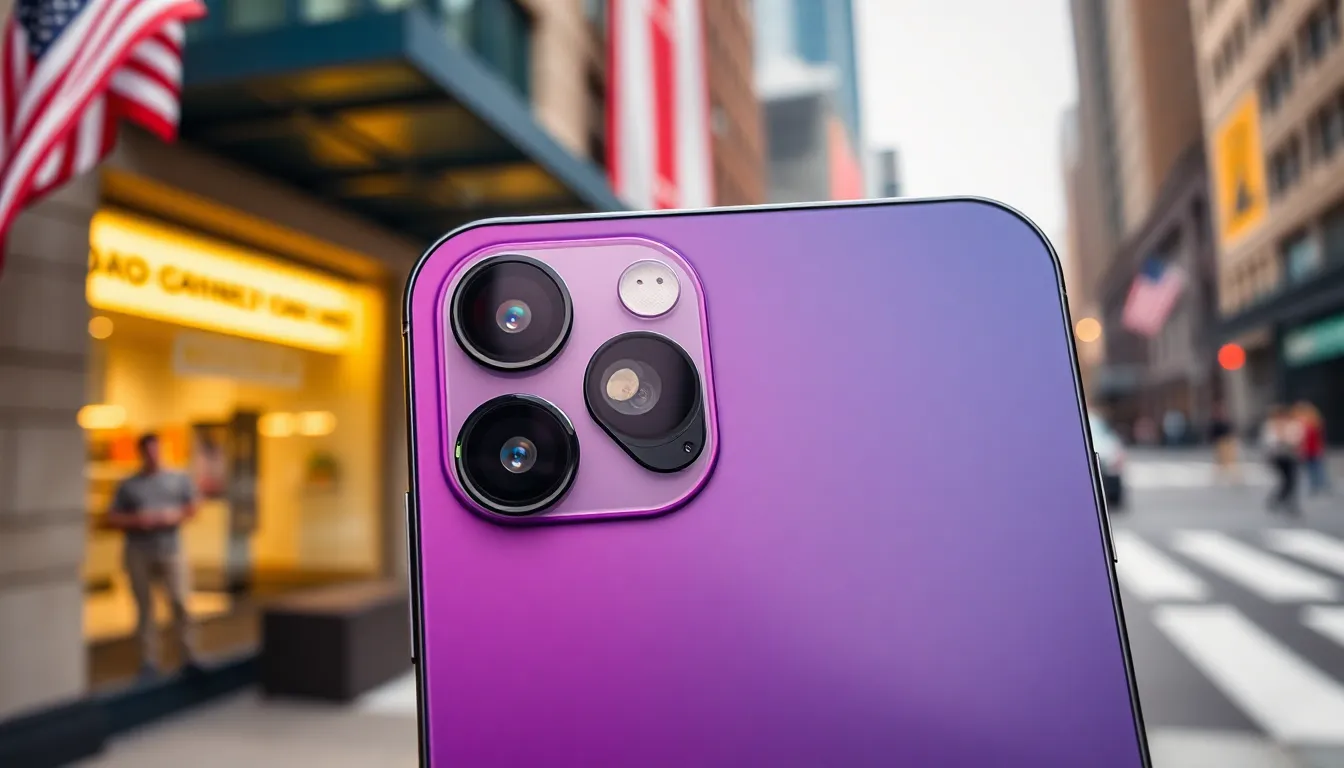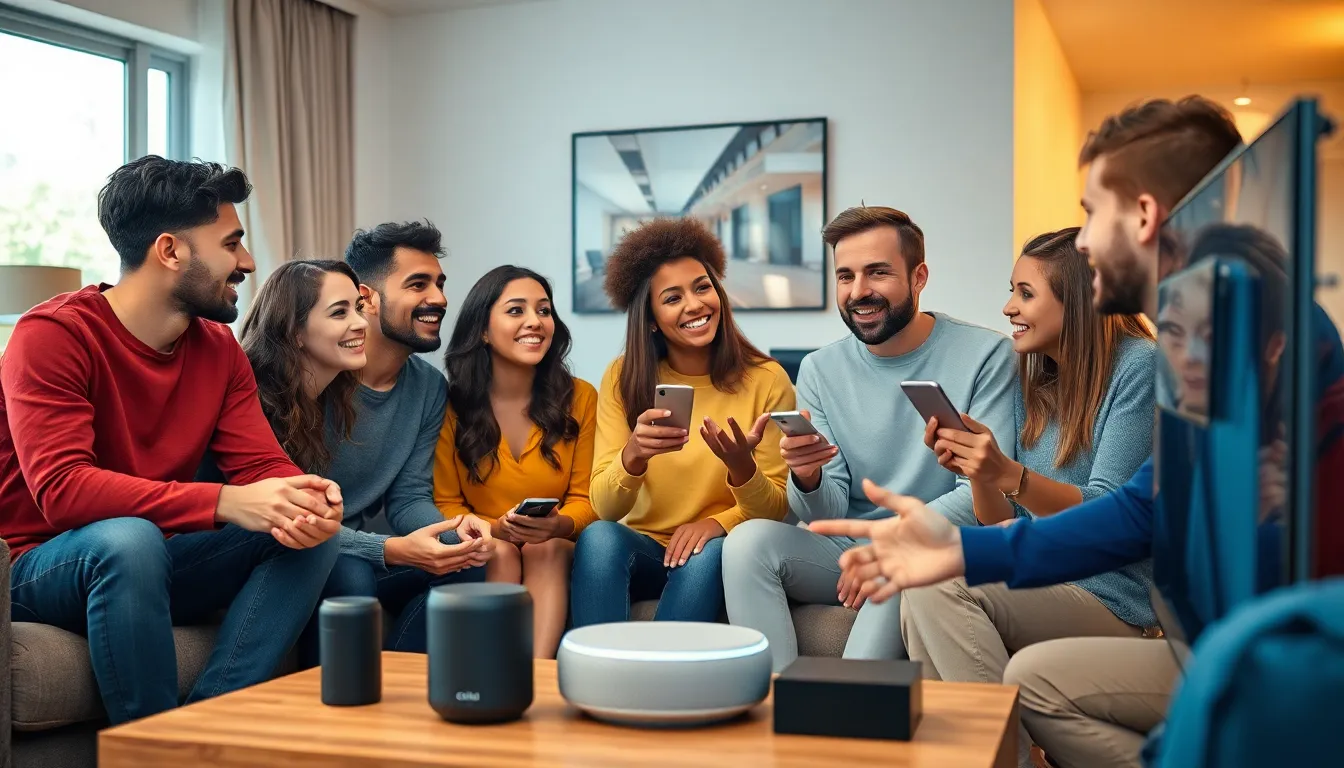In a world where smartphones are practically an extension of ourselves, the question of whether Android and iPhone can share location feels like a modern-day riddle. Picture this: you’re trying to coordinate plans with a friend who swears by their shiny Apple device while you’re proudly rocking your trusty Android. Can these two tech titans finally play nice and share their whereabouts?
Table of Contents
ToggleOverview Of Location Sharing
Location sharing between Android and iPhone devices presents distinct challenges. Users often rely on apps to facilitate this process, with varying degrees of success. Different operating systems use unique protocols for sharing location data, affecting compatibility.
Android devices primarily use Google Maps for location sharing. Through Google Maps, users can send their real-time location to Android and iPhone users alike. Users on iPhones, on the other hand, typically utilize Apple Maps or Find My Friends for location sharing. This can lead to confusion when coordinating plans, as both platforms don’t natively share directly with one another.
Apps like WhatsApp or Facebook Messenger provide alternative solutions. These applications allow users to share locations regardless of the operating system. By sending a location pin or sharing real-time updates, they bridge the gap between Android and iPhone effectively.
Security and privacy play crucial roles in location sharing. Both platforms emphasize user control over who can see their location. Users can manage their settings but must navigate different interfaces to do this efficiently.
Cross-platform coordination depends on which apps users choose and their respective settings. Selecting the right application can streamline communication. Users should ensure everyone involved understands how to share their locations securely and effectively.
Location sharing, while complex, isn’t impossible. Many tools exist to make it easier for users of different devices to connect and communicate effectively. With the right app, users can share their locations seamlessly, ensuring everyone stays in the loop.
Understanding Location Services
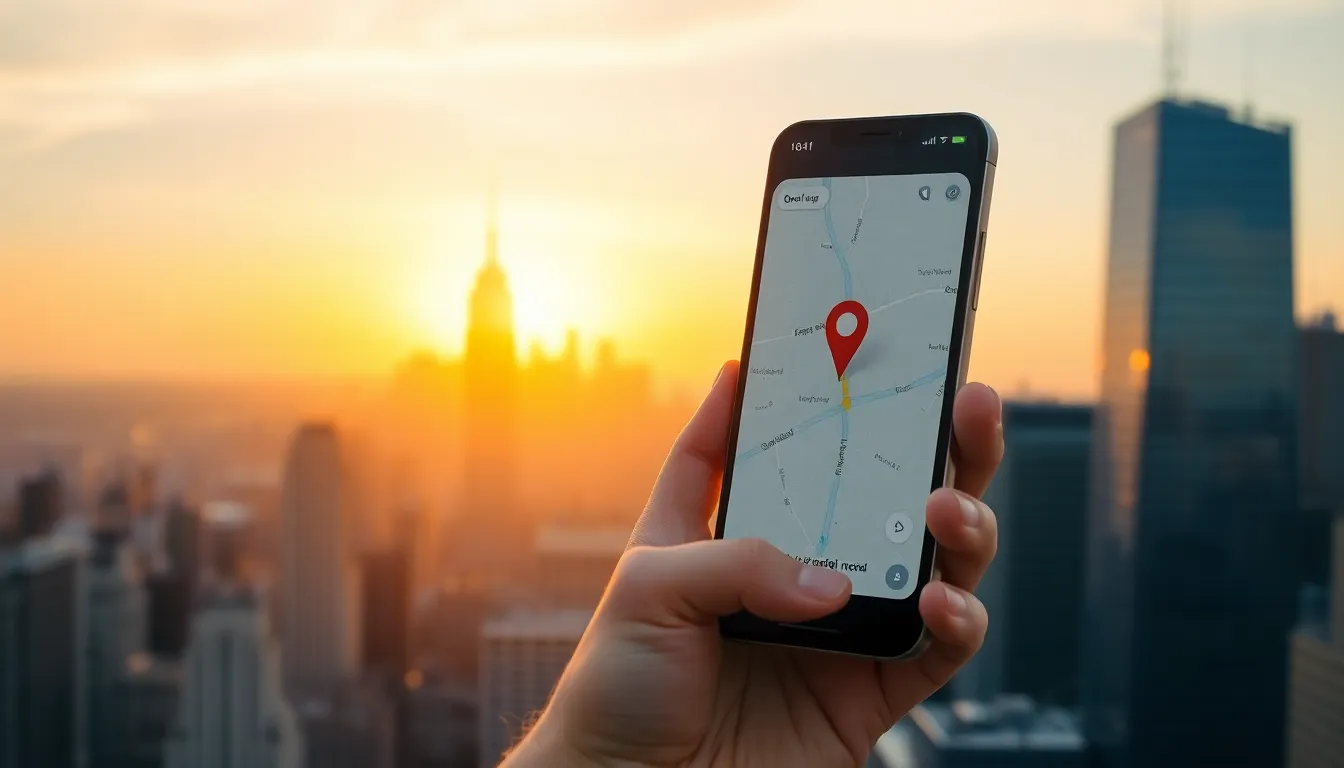
Understanding how location services operate provides clarity on sharing location between different devices. Android and iPhone systems utilize varied technologies to track and share geographic positions.
How Location Services Work
Location services rely on GPS, Wi-Fi, and cellular networks to determine precise locations. GPS provides the most accurate data, using satellite signals to pinpoint locations within meters. Wi-Fi networks assist in urban environments where GPS may falter, while cellular towers enhance location accuracy, particularly in remote areas. Both Android and iPhone leverage similar techniques but employ different applications for sharing. The Google Maps app facilitates location sharing on Android, while iPhones rely on Apple Maps or the Find My app. Users on both platforms can share real-time locations, but interoperability remains limited without third-party solutions.
Privacy Concerns
Privacy concerns significantly affect location sharing across devices. Users must understand how their location data is collected and used. Both Android and iPhone systems offer options to manage location sharing settings. Users can restrict access to specific contacts or apps, improving their privacy. However, navigating through different interfaces may complicate this process. Awareness of privacy settings helps users protect their data while sharing locations. Additionally, using third-party apps introduces potential risks since they might collect excess data. It’s crucial for users to be diligent and read privacy policies before sharing location information.
Cross-Platform Compatibility
Sharing location between Android and iPhone devices poses challenges due to differing ecosystem designs. However, users can still find workable solutions.
Android Location Sharing Features
Android devices utilize Google Maps for effective location sharing. This app enables users to send real-time locations to both Android and iPhone contacts. Through location sharing options, individuals can set specific time limits on visibility, enhancing privacy. Additionally, users can send location links via messages or social media, ensuring everyone stays updated during outings. Notifications about sharing can be customized, allowing control over connectivity. GPS and Wi-Fi technology work together for accurate positioning.
iPhone Location Sharing Features
iPhone users generally rely on Apple Maps or Find My Friends for location sharing. Apple’s ecosystem offers seamless integration with iCloud, making it easy to share locations among Apple device owners. The “Share My Location” feature lets users manage visibility, providing options to share location with trusted contacts. Users can also disable location sharing at any time for better privacy management. While Apple Maps operates primarily within the Apple ecosystem, sending location links to Android users presents a bridge for interaction. Accurate GPS coordinates enhance the reliability of shared locations.
Methods To Share Location Between Android And iPhone
Various methods exist for sharing location between Android and iPhone users. These solutions range from third-party apps to built-in features on both platforms.
Using Third-Party Apps
Third-party apps offer versatile solutions for location sharing. WhatsApp allows users to send their real-time location to anyone, regardless of their device type. Facebook Messenger also provides a location sharing option, making it simple for users to coordinate plans. These platforms maintain user privacy through controlled visibility settings, ensuring that location data remains secure. Other apps, such as Google Maps, facilitate sharing links directly to the shared location, enhancing compatibility across systems. Integrating these apps into daily communication can streamline the process of sharing locations with friends and family.
Via Built-In Features
Built-in features provide additional options for location sharing across different devices. Android users can utilize Google Maps’ real-time location sharing feature. This tool enables them to send their location to iPhone users via a shareable link. On the other hand, iPhone users can share their location using Apple Maps or the Find My app. They can grant access to their location for set durations, allowing friends and family to see their whereabouts. The “Share My Location” feature aligns with privacy preferences, giving users control over who sees their location. Exploring these built-in features simplifies communication and enhances planning visibility between device types.
Limitations And Challenges
Location sharing between Android and iPhone devices encounters several limitations and challenges. Different operating systems utilize distinct protocols, hindering seamless integration. Android primarily relies on Google Maps for sharing, while iPhone users depend on Apple Maps or Find My Friends. Consequently, trying to coordinate plans can lead to confusion.
Interoperability proves problematic without third-party solutions. WhatsApp and Facebook Messenger offer effective alternatives for location sharing, yet they require both users to have the same app installed. Apps enable communication, but they introduce additional steps compared to native functionalities.
Privacy concerns add another layer of complexity. Managing location sharing settings can differ greatly between the two platforms. Users often navigate unfamiliar interfaces, leading to potential oversights or errors in privacy management. Understanding how data is collected and used is essential, but each system presents unique challenges.
Technical limitations also arise when it comes to real-time sharing. Android’s capabilities do not always translate effectively to iPhone’s environment and vice versa. Featuring different user interfaces, both platforms can leave users frustrated when trying to send or receive location data.
Persistent connectivity issues may affect accuracy during location sharing. Real-time updates depend on GPS, Wi-Fi, or cellular networks, which can fluctuate based on the user’s environment. Whether indoors or outdoors, these factors significantly influence the reliability of shared location data.
Limitations in technology and user experience create barriers in location sharing between Android and iPhone. Finding effective solutions requires understanding the strengths and weaknesses of both operating systems while also considering third-party options.
Navigating location sharing between Android and iPhone users can be tricky but it’s not impossible. By leveraging third-party apps like WhatsApp and Facebook Messenger, users can seamlessly share their locations regardless of their device. Understanding the unique features and limitations of each platform is essential for effective coordination.
Privacy remains a crucial consideration when sharing location data. Users should take the time to familiarize themselves with the privacy settings on their devices. With the right tools and knowledge, users can enhance their connectivity while ensuring their personal data is protected. Embracing these solutions can make planning and meeting up much easier, bridging the gap between different operating systems.


